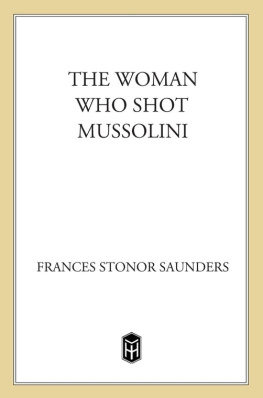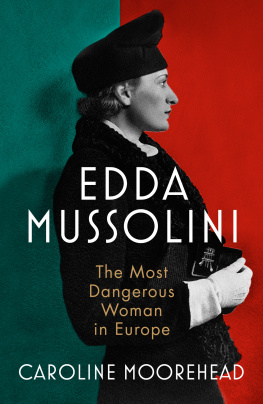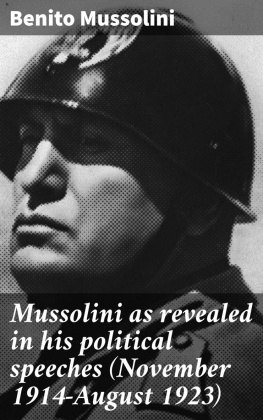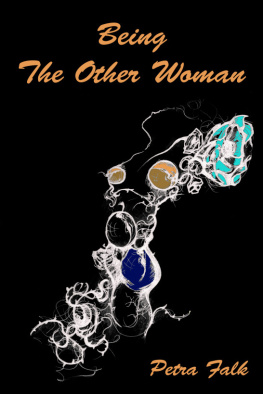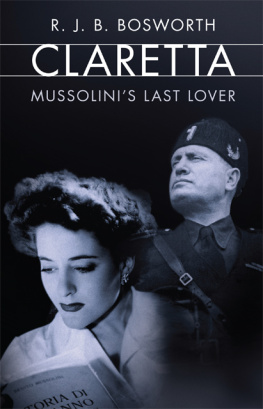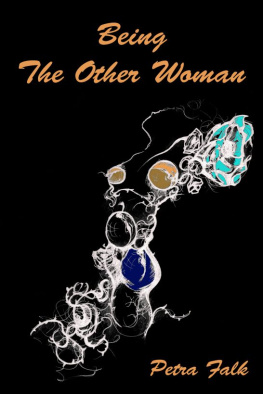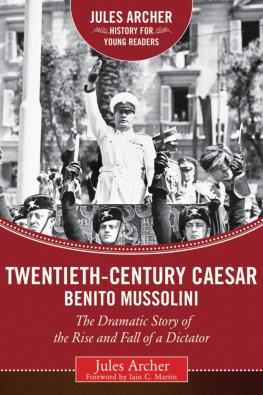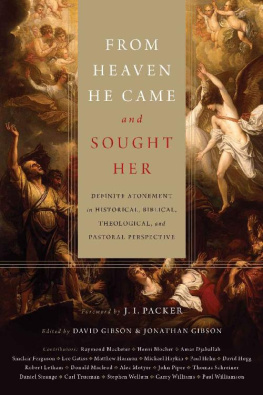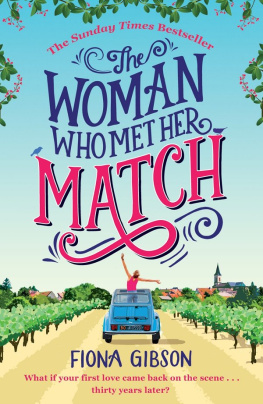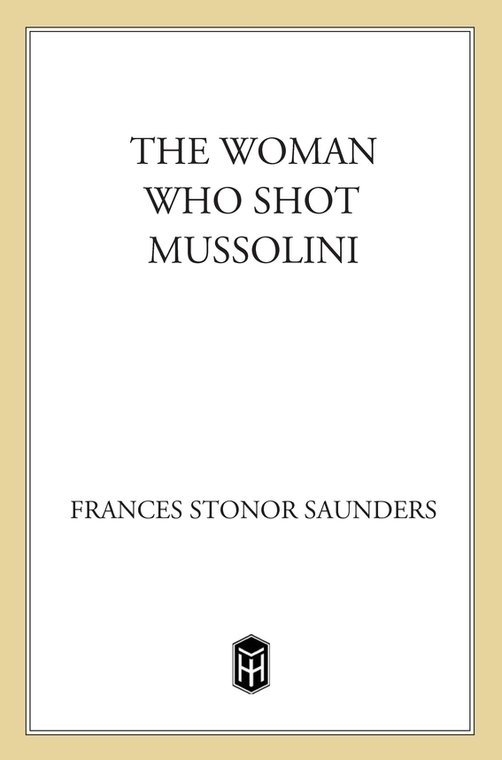Each historical archive is a world within a world, governed by its own apparently unfathomable laws. I am indebted to those many custodians of the past who unraveled the mysteries of their collections to me, in particular, Dottoressa Maria Pina di Simone and the staff at the Archivio Centrale dello Stato, Rome; Federica Onelli at the Ministero degli Affari Esteri, Rome; Ted Jackson at Georgetown University Library, Washington; Liz Ridley and Bobbie Judd at St. Andrews Healthcare archives, Northampton; the archivists and librarians at the National Library of Ireland, Dublin; and in London, at the Public Records Office, the House of Lords Record Office, the British Library, the London Library.
The current Lord Ashbourne kindly allowed me to explore the contents of an old leather traveling case belonging to Violet, his great-aunt. I am very grateful for access to this rich cache of documents and photographs, and for permission to quote from Ashbourne family papers from various sources. Thanks also to Helen McTaggart for sharing her recollections of a 1977 visit to Lucia Joyce at St. Andrews, and for lending me the photograph of Lucia in the asylum, published here for the first time.
Neil Belton, my editor at Faber and Faber, threw himself into this project with his customary conviction and enthusiasm, despite the flimsiest of outlines, and has provided invaluable comments over several drafts. Unfailingly generous in his attention and encouragement, he is one of the last great editors. Sara Bershtel at Metropolitan Books has also been tireless, a whirlwind of energy, sweeping away dead wood and thinning overhanging branches. My agent, Felicity Rubinstein, at Lutyens and Rubinstein, has taken care of me in ways that far exceed the bounds of duty. I am truly grateful.
In 2006, I applied to the Authors Foundation for a grant to tide me along. To my amazement, a check arrived some weeks later in the post. Like an unexpected legacy, it opened up the sky to meand no aunt had to die falling from a horse in Bombay. My thanks to the awards secretary and panel of the Authors Foundation and K. Blundell Trust for this vital assistance.
Craig Raine published a version of the opening sequence of this book in his tri-quarterly magazine, Aret , in 2005. Then and subsequently he has given me help and advice, turning the manuscript around at a point when it was awkwardly skewed. A great mentor and friend. As is Ann Pasternak Slater, a generous provider of intellectual and gastronomic sustenance over many years. Carmen Callils belief in the importance of telling this story was unflagging. She read and marked up an early draft, and I hope I have done justice both to her editorial wisdom and a great friendship.
For initiating me into the workings of the Lebel revolver, and teaching me everything I now know about guns, my thanks to Jason Abbot (with apologies that I remain as poor a shooter as Violet). For their support and hospitality in Rome, warm thanks to Domitilla Ruffo, Fabio Fassone, Filippo Porcari, Flavia Porcari, Frank Dabell, and Jay Weissberg. I was greatly assisted by my brothers: Hugo Saunders, for his promise to read this book, and Alexander Stonor Saunders, for his eternal vigilance over the question of opening lines. I am also grateful to Mary Stonor Saunders, Olivia Jackson Daniels (a budding historian), and to my mother, Julia Stonor, who, in the days before the wondrous arrival of the digitized online archive of the Times , elegantly transcribed the relevant articles from the originals, bound in huge volumes in the London Library. A labor of love, one of many.
Finally, thanks to Fiona Marques, Zo Heller, Nick Hewer, Alvin Caudwell, Anna Mike, Roger Thornham, Gavin Houghton, John and Annoushka Ayton, Tom Cotton, and Conrad Roeber for love and support; to Timothy Radcliffe, O.P., for a joyous and sustaining friendship, and for being appropriately contrite at handing in his latest book way ahead of me; and to Fiona Burton, to whom this book is dedicated, for her professional insight, galvanizing encouragement, and the use of a well-appointed shed in her garden. A room of ones own. Priceless.
FRANCES STONOR SAUNDERS is the author of The Cultural Cold War: The CIA and the World of Arts and Letters , which was short-listed for the Guardian first book award, received the Royal Historical Societys Gladstone Memorial Prize, and was translated into ten languages. Her writing has appeared in the Los Angeles Times , as well as the Guardian and The Independent . She lives in London.
I amyet what I am, none cares or knows;
My friends forsake me like a memory lost:
I am the self-consumer of my woes
And yet I am and lovelike vapours tossed
Into the nothingness of scorn and noise
Into the living sea of waking dreams
Where there is neither sense of life or joys
But the vast shipwreck of my lifes esteems
JOHN CLARE, I AM
For the last thirty years of her life, Violet was compelled to live at odds with her conscience and her desires. Even in death, her wishesas to the disposal of her estate, her body, and her memorywere denied. Violet left money for a Requiem Mass at the Catholic cathedral of Northampton. The Mass was given not in the cathedral but in the far humbler surroundings of St. Gregorys, a local Catholic church. She requested to be buried in the Catholic part of the cemetery at St. Andrews with all the rights of the Catholic Mass. She was in fact interred at Kingsthorpe Cemetery, a dreary expanse of flatland butting up against a noisy through street of Northampton. (Lucia Joyce, who died in 1982, three decades after she was committed to St. Andrews, is also buried here, just feet away from Violet.)
As per Lord Ashbournes request, there was no public announcement of Violets death. There was no friend, no member of the familypresent at the burial, not even Constance, who was too frail to make the last journey to Northampton. (She died three years later.) Ashbourne himself declined to attend, settling the question of his aunts remains and the closing of her affairs by correspondence. On 4 June 1956, fully a month after her death, Dr. Tennent wrote to tell him that fortunately, she did not have much suffering and her passing was a peaceful one. There were, he added, no matters outstanding with the accounting department.
Graveyards are crammed with narratives, all of which end in death. Gravestones are the permanent marks we leave to give notice to future generations that we were once in the worldthe sign made, just as we leave, that we were here. They are laid out in neat rows, a grid to impose order on the enormous tangle of human existence. In her will, Violet had set aside one hundred pounds for the erection of a gravestone. In this, as in everything else, she was shortchanged. Above her grave, plot number 12411, is a bland cross in cheap gray quarry stone. Its inscriptionViolet Gibson, 1876-1956.is equally parsimonious: the punctuation is highly unusual, the result of the stonecutter following Ashbournes text, which was communicated by telegram.
The comma: it suggests something to followa sentiment perhaps, a memento mori, or words that supply a brief record of the life. A comma is a breathing space, a tiny pause, before a further thought. Here, it is merely an awkward hiccough. What is life? asked John Clare in his poem of the same title. Its length? A minutes pause, a moments thought. Nothing follows the comma on Violets gravestone, except the dates of her birth and death. Full stop. Set in stone. Her extraordinary story lies hidden between the comma and the period.

